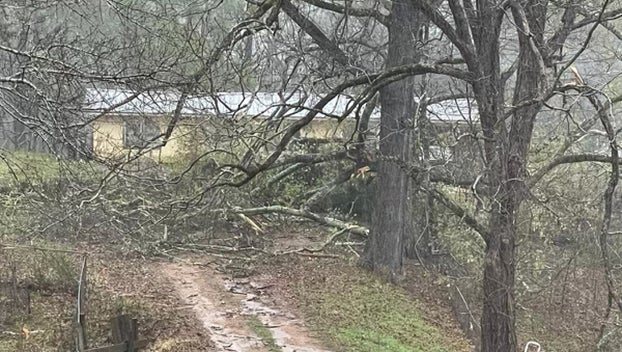Flood fears spread south
Published 12:27 pm Wednesday, May 4, 2011
MEMPHIS, Tenn. (AP) — Flood worries that prompted the U.S. government to blast open a Missouri levee to ease pressure on some towns are rippling down the Mississippi River, leading to more evacuations and unease as the Army Corps of Engineers weighs whether to purposely inundate more land with water.
The breach of southeastern Missouri’s Birds Point levee was heralded by some Illinois towns along the Ohio River as a needed relief from record flooding, and the man who ordered that action says he may do the same with other Mississippi River spillways as flood prospects mount.
Maj. Gen. Michael Walsh said he understood the frustration at the corps’ decision to sacrifice the levee Monday and send a wall of water over 130,000 acres of farmland the state of Missouri tried suing to save. “But this was one of the relief valves for the system,” he added. “We were forced to use that valve.”
That calculation to draw down the Mississippi and Ohio rivers in the nation’s midsection appeared to do its job. On Tuesday night, the Ohio at Metropolis, Ill., measured 54.7 feet, about the same level it had been at the time of the blast. Without that breach, the river was forecast to have steadily crept up to a crest of more than 58 feet.
Sandbagging continued in Metropolis, where the National Weather Service said the Ohio would crest Thursday morning at 55.8 feet. The river has swamped many Metropolis homes and businesses but has stayed out of the city’s touristy town square, which is elevated enough to be free of danger.
In Cairo, the Ohio had dropped to 60 feet, about a foot and a half lower than it was at the time of the breach. Cairo, a town of about 2,800 residents, is at the confluence of the Ohio and Mississippi rivers. Downstream of Cairo — in southeast Missouri, Kentucky, Arkansas, Tennessee, Mississippi and Louisiana — concerns are growing as the Mississippi River continues to rise.
Memphis, where the Mississippi was at 43.8 feet Tuesday, could see a near-record crest of 48 feet on May 11, just inches lower than the record of 48.7 feet in 1937. Water from the Wolf and Loosahatchie rivers already has seeped into parts of the suburbs, and some mobile home parks were swamped.
Flood fears prompted an emergency declaration for 920,000 residents in Shelby County, where authorities blocked some suburban streets and about 220 people were staying in shelters. Emergency officials there estimate that some 5,300 homes and businesses could be affected by flooding blamed at least partly on more than 11 inches of rain that have soaked the Memphis area since April 25.
Flooding already has begun in Dyersburg, which is about 70 miles north-northeast of Memphis. Mayor John Holden said that people in parts of that city near the North Fork of the Forked Deer River should evacuate. Farther south, the lower Mississippi River was expected to crest well above flood stages in a region still dealing with the aftermath of last week’s deadly tornadoes.
Forecasters say the river could break records in Mississippi set during catastrophic floods in 1927 and a decade later. Gov. Haley Barbour started warning people last week to take precautions if they live in flood-prone areas near the river, comparing the swell of water moving downriver to a pig moving through a python.
With tornados and the threat of rivers gone wild, “we’re making a lot of unfortunate history here in Mississippi in April and May,” said Jeff Rent, a Mississippi Emergency Management Agency spokesman.
Because the maximum-security Louisiana State Penitentiary at Angola is particularly flood-prone, the state plans to evacuate the most medically vulnerable inmates by next Monday, then other inmates later.
Walsh has made clear he may use other downstream “floodways” — basins surrounded by levees that can be intentionally blown open to divert floodwaters — to try to rein in the trouble.
Among those that could be tapped are the 58-year-old Morganza floodway in central Louisiana and the Bonnet Carre floodway about 30 miles north of New Orleans. The 4-mile-wide Morganza has been pressed into service just once, in 1973. The Bonnet Carre — christened in 1932 — has been opened up nine times since 1937, the most recent in 2008.
Unlike the Missouri levee, these floodways can be opened using gates designed for the purpose, not explosives that unleashed the rush of floodwater into Birds Point that damaged or destroyed as many as 100 homes and washed away crop prospects for this year. Walsh said there are no homes in the Bonnet Carre floodway and only scattered homes and farmland in the Morganza one.
Elsewhere, the Army Corps of Engineers said it was holding water in West Virginia’s reservoirs in an attempt to prevent flooding from worsening along the Ohio and Mississippi rivers.
On Tuesday, a group of 25 farmers sued the U.S. government in Missouri, arguing that their land near Birds Point had been taken without adequate compensation.
Agriculture Secretary Tom Vilsack said farmers with crop insurance will be eligible for government reimbursements if their land was flooded. Other help will be available for livestock producers and tree farmers under the same programs designed for natural disasters. People who lost homes may also be eligible for rural housing loans.
Missouri Gov. Jay Nixon said state leaders would push to have the Birds Point levee rebuilt and restore the farmland’s productivity. Walsh acknowledged it could be late summer or early fall before the water fully drains off the land, and sediment and moisture could do lasting damage.
After Memphis, the Mississippi is expected to crest May 12 at Helena, Ark., and further south in the following days. Forecasters predict record levels at the towns of Vicksburg and Natchez, Miss.
High water already has shut down nine river casinos in northwest Mississippi’s Tunica County, where about 600 residents have been evacuated from flood-prone areas on the inside of the levee, county spokesman Larry Liddell said.






